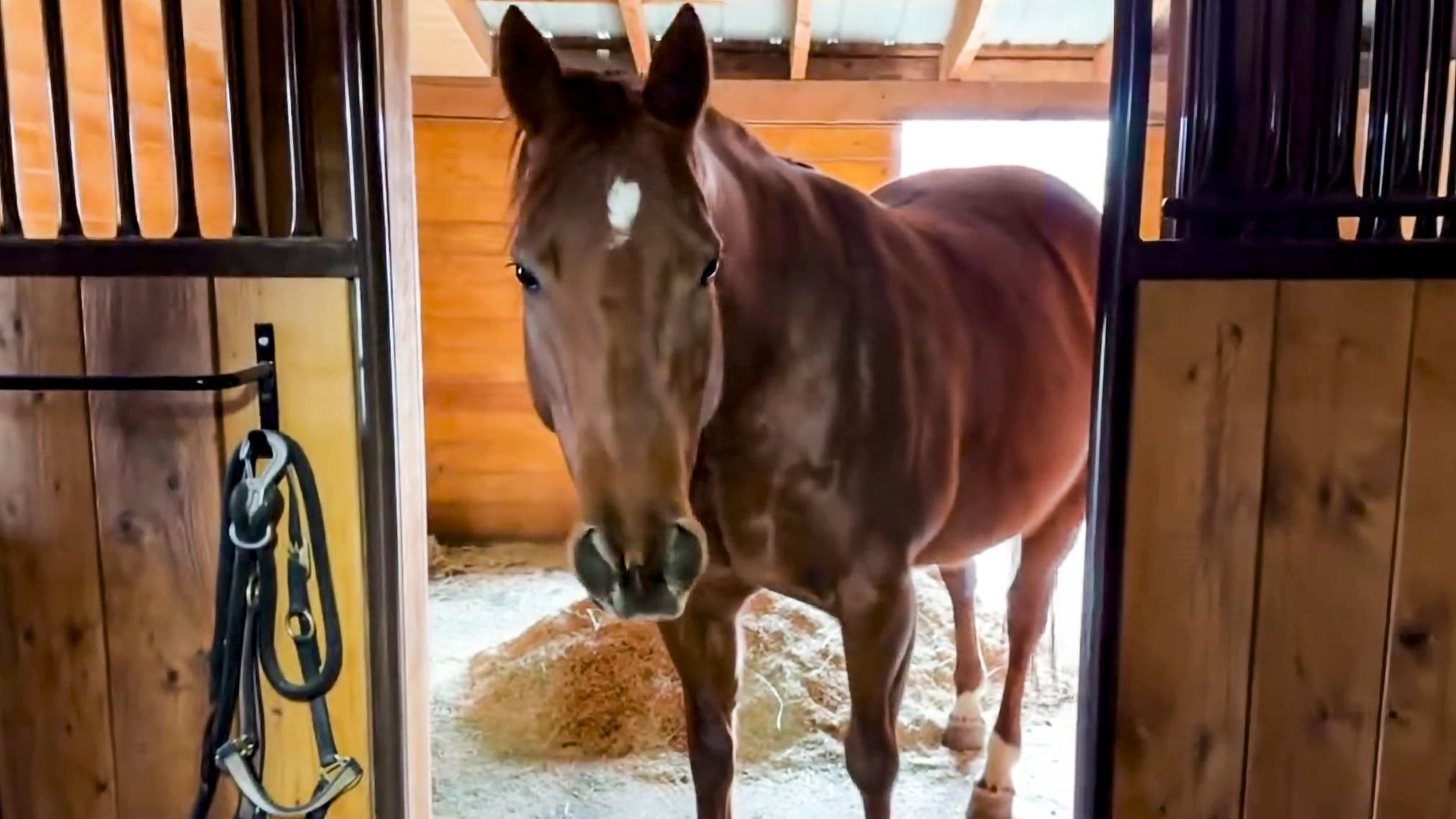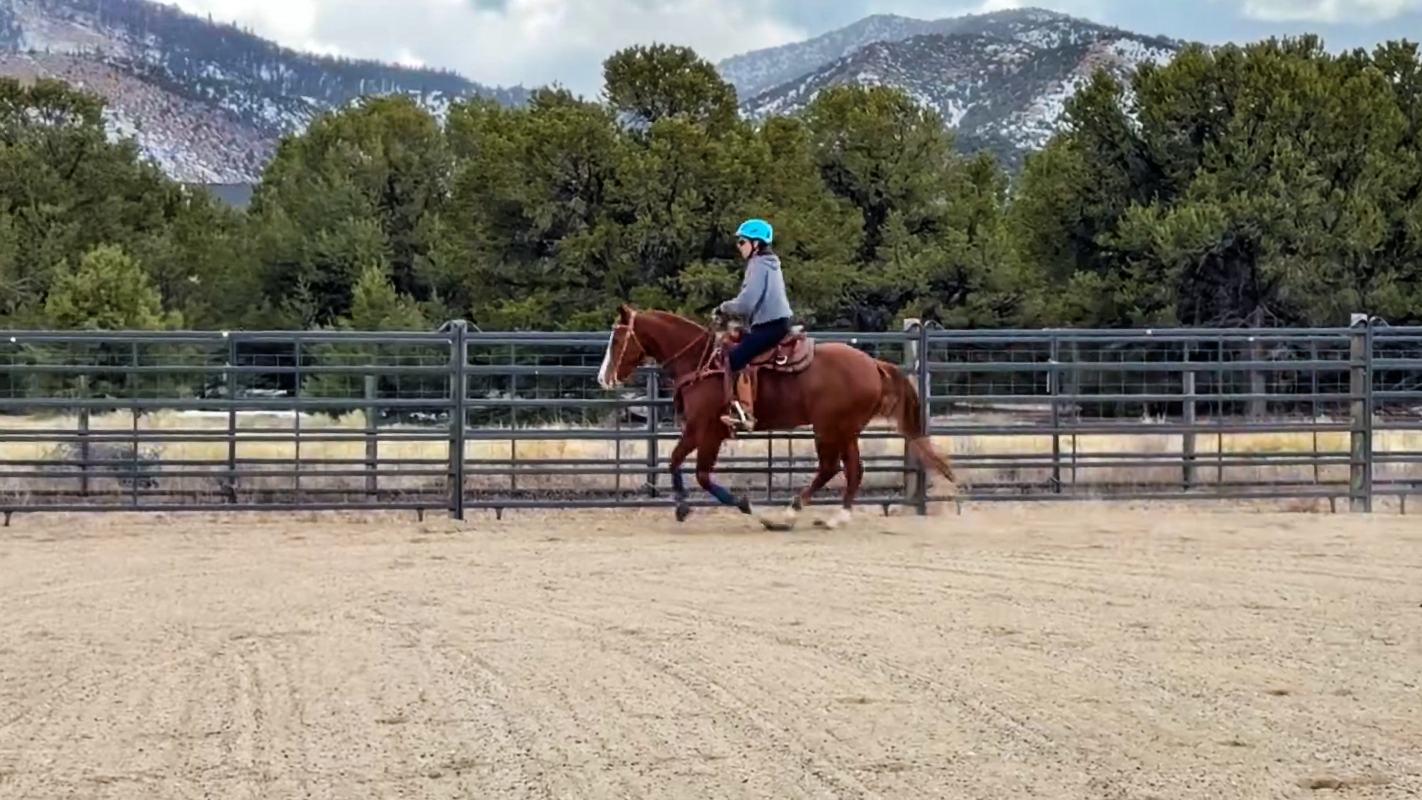
My sweet little mare, Annie, is now 3/4 of the way through her pregnancy. She’s only 14.0 hands and very compact (short-backed), and the baby (I like to think of as a colt) is making her just as wide as she is long. She’s the shape of a giant beach ball—with a head, tail, and four legs attached.
As I’ve mentioned before, Annie seems to be in pregnancy bliss—and what’s not to be happy about? She has the best stall, plenty of cushy bedding, and an “all-u-can-eat” buffet with the good stuff—alfalfa (the equine equivalent of crab legs on the cruise ship buffet). Best of all… no riding!
Beyond all the perks, Annie has always been enamored by young horses, in a way that made it obvious she craved motherhood.
Lots of people have asked what exams, tests, treatments, etc. a pregnant mare needs. The answer is almost nothing, beyond good feed and normal healthcare. Once the mare is finally settled into pregnancy (for Annie, that involved tons of veterinary care), there’s not much left to do for the next 11 months other than rhino vaccinations at five, seven and nine months. She just got her last rhino shot last week.
Her due date is April 28th, but that’s based on an average figure—it could easily be two weeks either side of that. She’s a 17 year old “maiden” mare (meaning this is her first foal), and oftentimes maiden mares foal early. That’s what I am hoping for! So, starting the first week of April, we’ll be keeping a close eye on her, looking for the signs of imminent foaling. In the meantime, we sit and wait, and treat her like a queen. Even the geldings see it that way.
The two mature geldings that Annie is turned out with, Casper (Rich’s main ride) and Abner (Lucy’s horse—our “uncle” horse), are quite protective of Annie now. One is generally stationed on each side of her and they close ranks whenever an “outsider” horse is around. That was really obvious when we brought the new young gelding home in December. Annie was not impressed.

Goodnight's Principles of Riding Training Videos
Position, balance, rhythm & cueing
Exercises to improve riding skills
Cantering—everything from how to ride the canter to flying lead changes.
For the more advanced rider, advanced use of the aids, collection & lateral movements
 Katz in a Kradle, aka Tom, Tomcat, Tommyboy, is now a 5-year-old trained cutter that we bought at the Western Bloodstock sales in Fort Worth during the cutting horse futurity in December. He’s an own son of the renowned AQHA stallion, Highbrow Cat, out of a Dual Rey mare. Cutting royalty, indeed.
Katz in a Kradle, aka Tom, Tomcat, Tommyboy, is now a 5-year-old trained cutter that we bought at the Western Bloodstock sales in Fort Worth during the cutting horse futurity in December. He’s an own son of the renowned AQHA stallion, Highbrow Cat, out of a Dual Rey mare. Cutting royalty, indeed.
He was ridden by top cutting horse trainer, Austin Shepherd, which factored into our decision to buy him. Tom seems to have a lot of natural talent, and Austin has a soft way about him that gently coaxes the talent out of horses. Best of all, Tom has a sweet and willing temperament to go with the whole package.
After months of training and competing, all in preparation for the December sale, Tom was due for some R&R once we got him home. Our vet, Dr. Casey Potter of Elite Equine (a performance horse/lameness specialist), did a post-purchase exam. It was determined that Tom had a few areas of soreness and would benefit from IRAP injections (a cutting-edge biologic treatment derived from the animal’s own blood cells), followed by some time off to rest and heal. Along with the injections, we started him off with a loading dose of Cosequin ASU (double-dose for two weeks) to help keep his joints healthy going forward.
We just recently put Tom back into regular work, starting with free-longing to get his legs back under him, and to help him acclimate to our high altitude. I just started riding him last week, and it’s good to finally get to know what he’s like.
Since December, we’ve been wondering a few things:
Are his gaits smooth?
What is his energy level?
How responsive is he?
Will he buck or spook?
I thought I knew the answers to those questions, but until you actually ride a horse, you can’t really know. At high-level performance horse sales, like the cutting horse sales, you don’t have an opportunity to ride the horse before buying (but you can get veterinary exams). When you finally get to ride the horse, and know that he is in fact what you thought you were buying, it is a huge relief.
We couldn’t be happier with Tom. And even though he’s technically my husband’s horse, Rich is happy to share him with me since I currently don’t have a horse to ride.
It’s a win-win for everyone. Tom is quite a bit younger than what Rich was hoping to buy. Young horses (let’s say under the age of 6), come with their own set of challenges—especially horses as highly bred as Tom. A steady hand at the helm is important when they’re settling into a new life.
I’m hesitant to say it out loud (writing doesn’t count, right?), but things couldn’t be better in our herd right now.
All of us, two and four-leggeds alike, are looking forward to the first signs of spring. (It comes late here in the mountains, with March being our snowiest month, and April the second snowiest.) For now, we are content to ride in circles in the toasty indoor arena…but soon we’ll be ready to get outside to spread our wings and fly!
